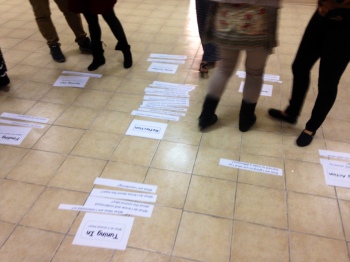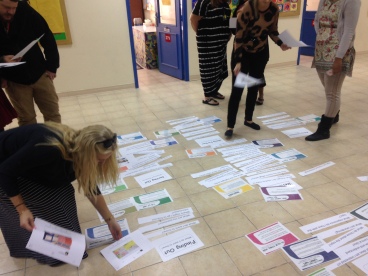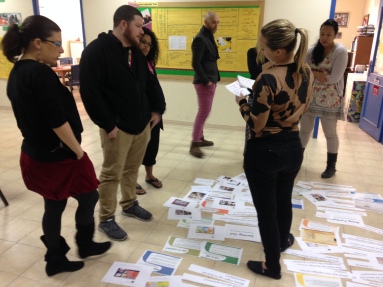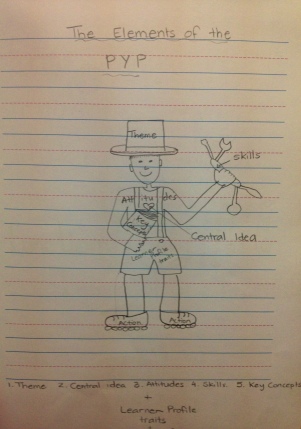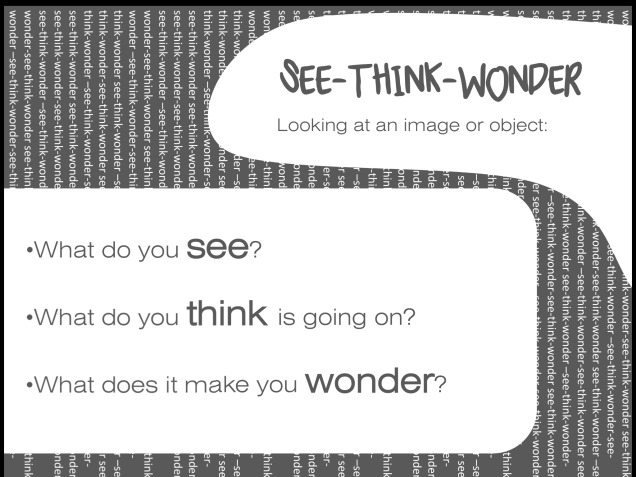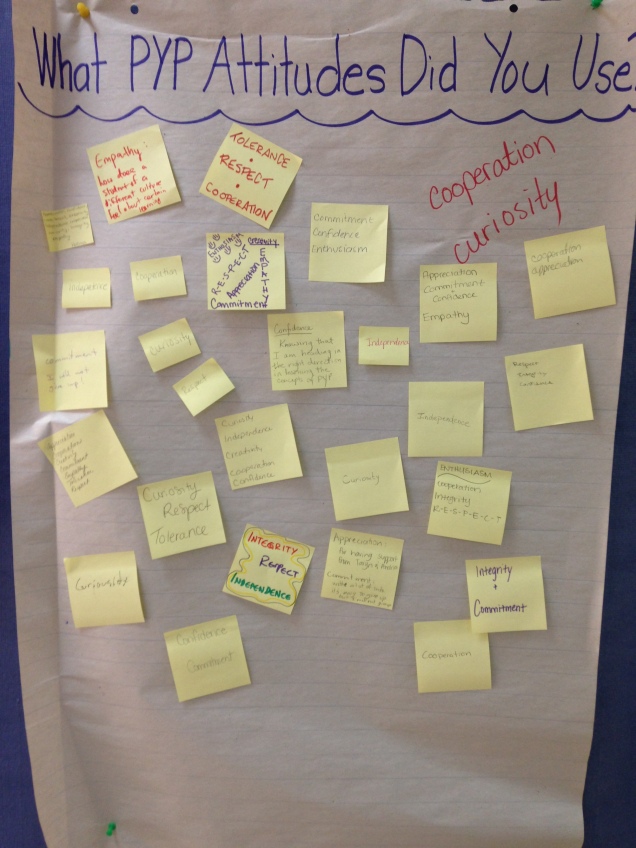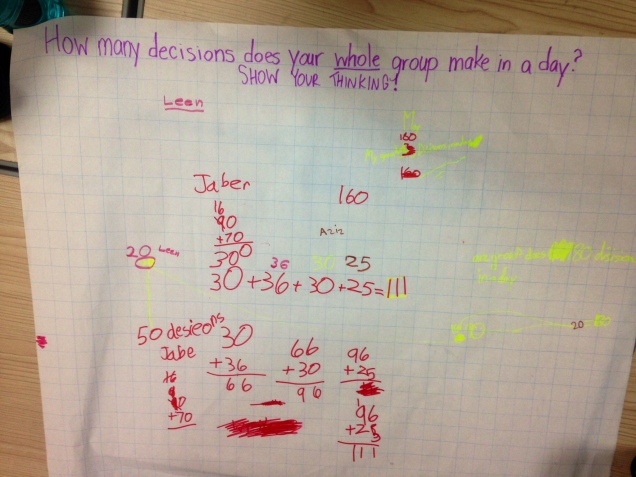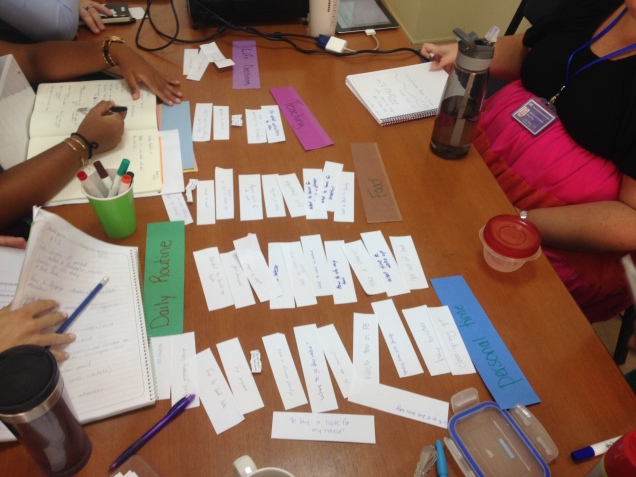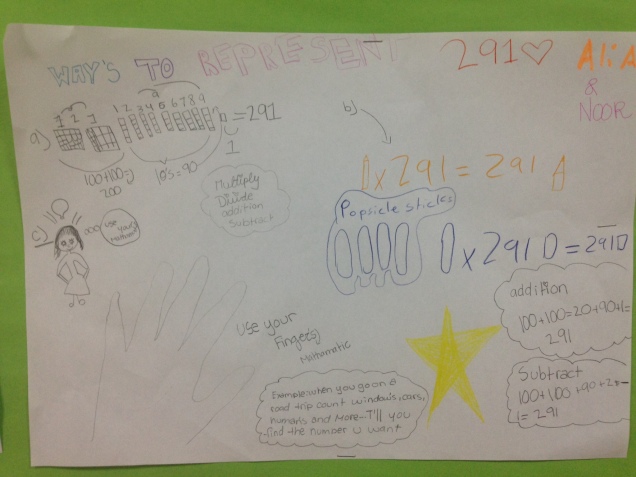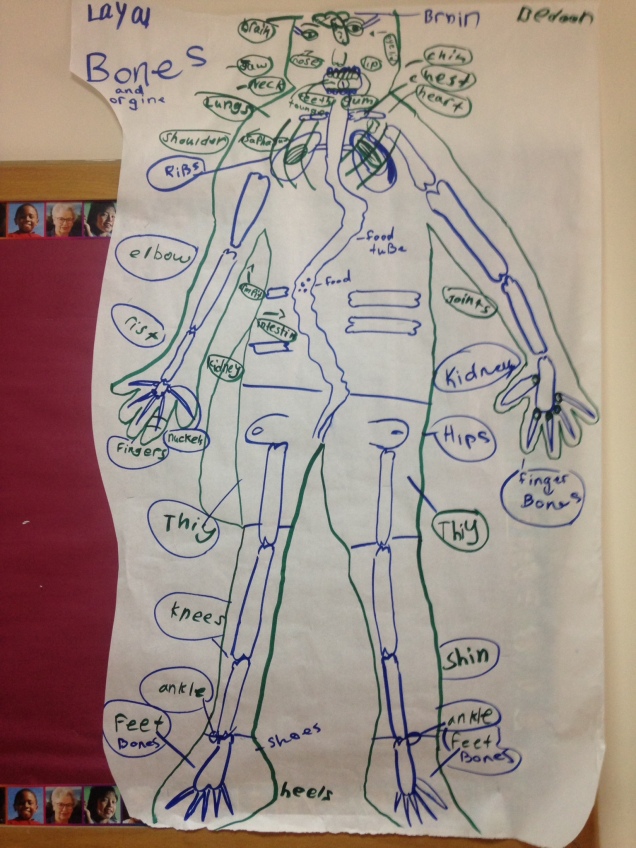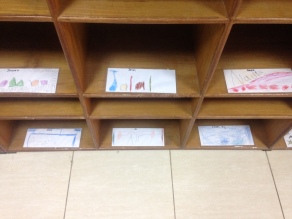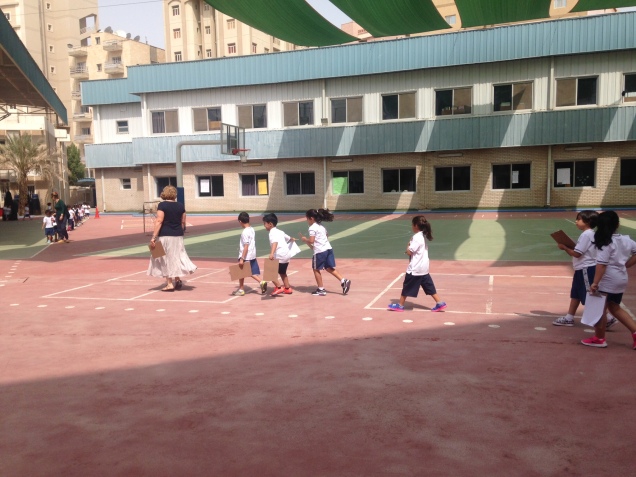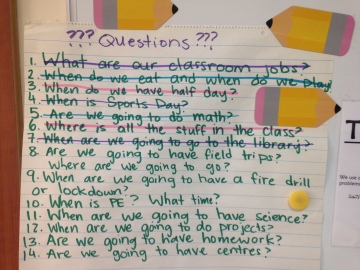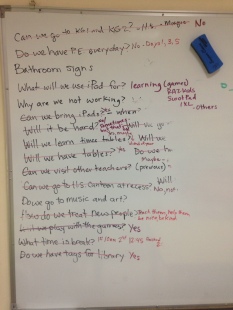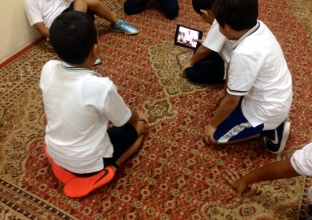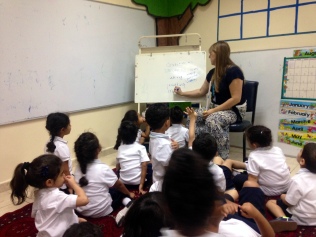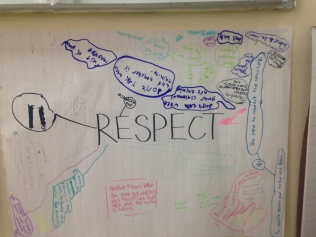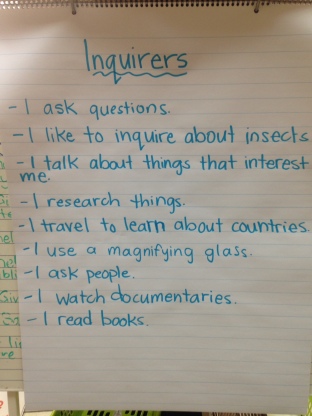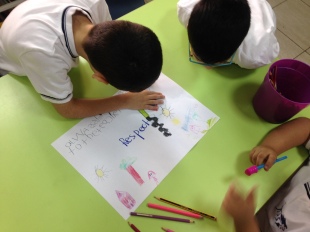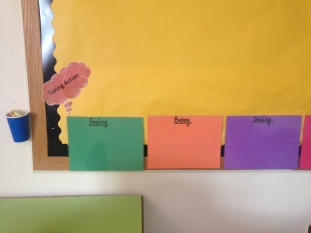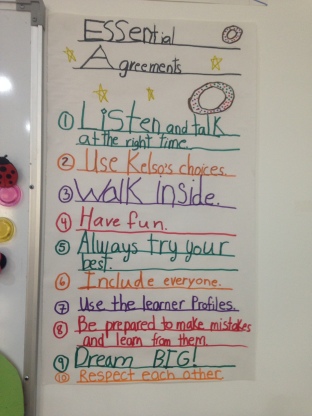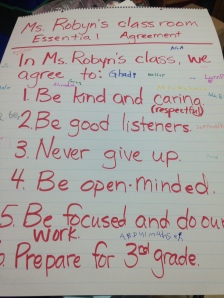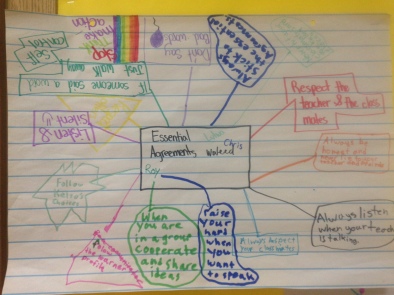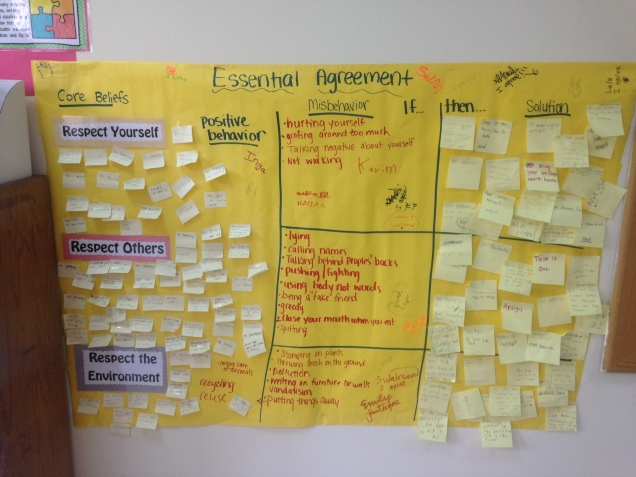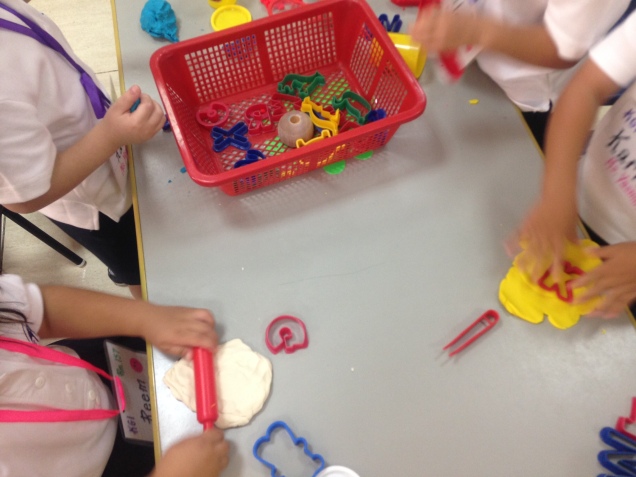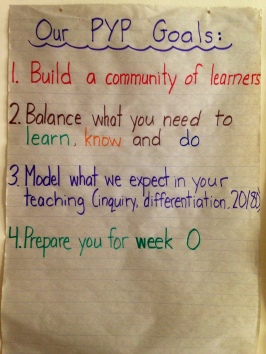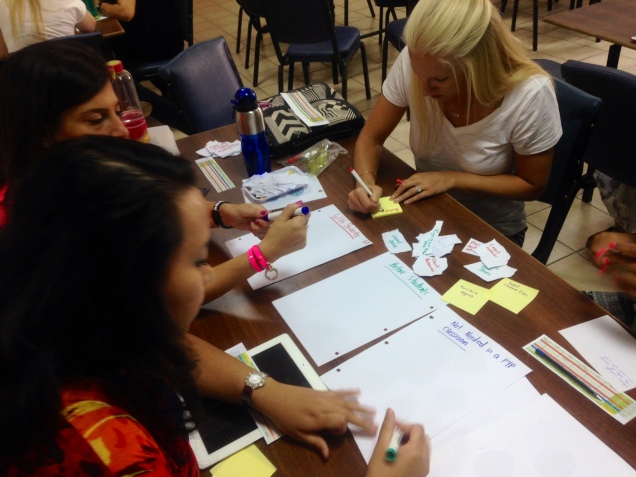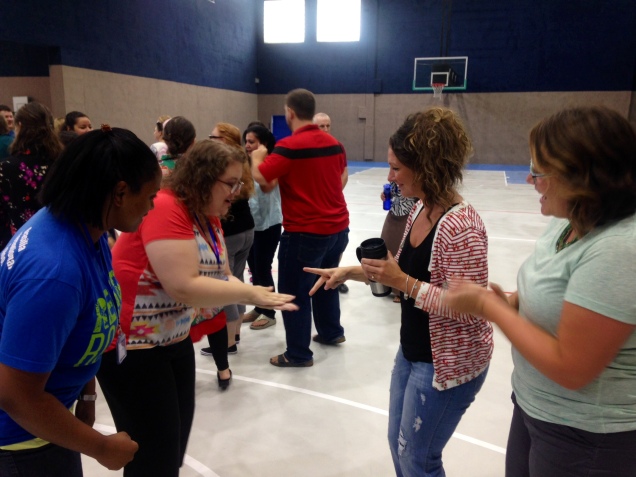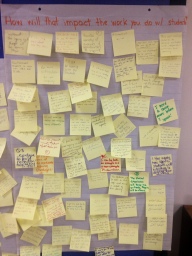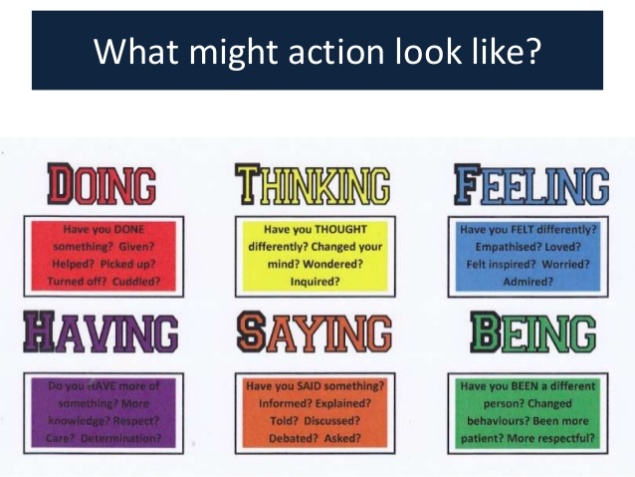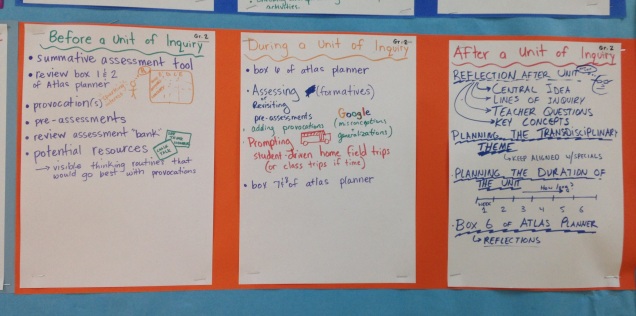During our half day of Personalized Professional Learning, I hosted a workshop on inquiry-based math strategies, but not everyone who wanted to attend could attend… so I thought I’d recap the workshop here for those of you who could not make it – and for those of you at different schools who might be interested in this topic as well.
The structure of the workshop was very hands on, so in the absence of you being able to actually engage with the materials and manipulatives, I will provide a combination of notes, photos, questions and reflections that will hopefully allow you to engage in some of the same ideas, just in a different way.
Tuning in – What do already know?
Think about or jot down your current understanding of each of the inquiry-based math strategies listed below:
- math time capsule
- open ended centers
- magic question
- open-ended questions
- number talks
- math congress
- visible thinking routines
- inquiry cycle
If you have a thorough understanding of each of these strategies, you probably do not need to read on. If you think your current understanding has room to grow, read on!
Open-Ended Centers
I’ve already written a post about open-ended math centers and how they work in our early years classrooms. During the workshop today, each group had a bin with the three essential ingredients of an open-ended math center: manipulatives, writing utensils, and a placemat/whiteboard.
Here are some pictures of how teachers tested out a few open-ended math centers:
The Magic Question
I’ve also written about my favourite inquiry question – What do you notice? In the workshop we looked at how this question can be used for math specifically.
Take a look at this multiplication chart. What do YOU notice?

Open-Ended Questions
Answer this question: Compare the following fractions using < > or =
1/4 ____ 1/2
Now answer this question:
What is the same as a half?
Reflect on the difference between answering the first and second question. What are the benefits of asking open-questions in math?
Take a look at the following image. How many dots are there?

How did YOU figure it out? Here is a picture of all the different ways the participants of the workshop figured it out.
Math Congress
Step 1 – Present the problem: A sports store has a number of bicycles and tricycles. There are 60 wheels in total. How many of each kind of bike could there be?
Step 2 – Work towards solving the problem. Markers and chart paper work best!
Step 3 – Share discoveries and strategies with fellow mathematicians. Make sure fellow mathematicians are invited to ask questions, make connections, comments and conjectures!
Visible Thinking Routines:
Use the Visible Thinking Routine “Claim, Support, Question” to share some of your thinking about decimals.
There are also many other Visible Thinking Routines that are helpful in approaching math in an inquiry based way!
Inquiry Cycle:
Kath Murdoch’s inquiry cycle is a great way to make any math more inquiry-based.
A CCSS math standard: Know and apply the properties of integer exponents to generate equivalent numerical expressions.
What do YOU already know about this?
What do YOU need to find out about this?
How could YOU find out about this?
Math Time Capsule:
Now, think about or jot down your understanding of each of the inquiry-based math strategies listed below. A math time capsule is a great way to show growth and progress in math – whether it’s over the course of a unit, a year… or even of the course of a workshop!
- math time capsule
- open ended centers
- magic question
- open-ended questions
- number talks
- math congress
- visible thinking routines
- inquiry cycle
How did your understanding of these strategies grow and change?
In the actual workshop, after each strategy, we took some time to discuss how the strategy could be applied/adapted to different content and different age levels. Too often when we are looking at strategies we are focused on the actual strategy within to confines of the example that is used. This leads to the conclusion that “That doesn’t work for the grade/content that I teach”. Instead, I challenged the participants in the workshop – and I challenge you in the same way – to focus on the essence of each strategy and how that same approach can be used in different ways, for different ages and for different strands of math.
Here are a few examples of how the same strategy can be adapted for different content and different ages:
Math time capsules – In Grade 5 you might give students the summative task on the first day and then again on the last day to show all of the growth and progress they experienced. But in KG, you may conference with a student and voice/video record everything they know about shapes, and then record them again at the end of a unit to capture growth in their understanding.
Magic question – In KG you might show a ten frame and ask “What do you notice?”. In Grade 2 you might show a hundreds chart and ask “What do you notice?”. In Grade 4 you might show a multiplication chart and ask “What do you notice?”.
Inquiry cycle – In Grade 1 you may use the inquiry cycle to structure a whole class inquiry into measurement. What do we know about measuring objects? What do we want to know about measuring objects? How can we find out more about measuring objects? In Grade 6 you might use the inquiry cycle to structure self-directed, personal inquiries towards calculating volume of 3-d shapes. What do I already know about finding volume of 3-D shapes? What do I still need to find out? How can go about that?
The possibilities are endless. If you focus on the “why” a strategy is effective and “how” a strategy helps foster thinking and exploration… then the “whats” become infinite! I also shared this google doc with some of my favourite inquiry-based math resources (books, blogs and Tweeters!) Feel free to have a look!
What are your favourite inquiry-based math strategies?
















